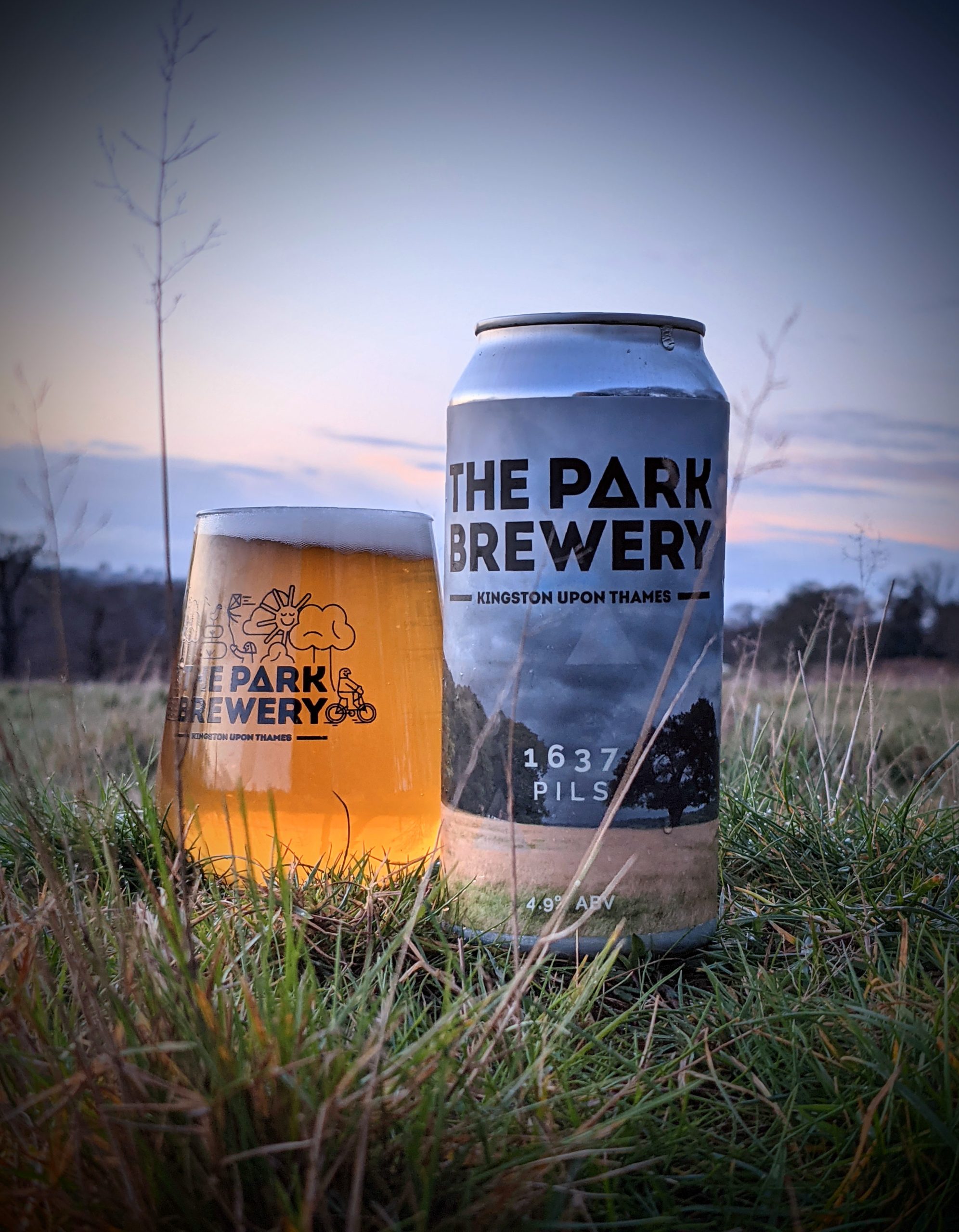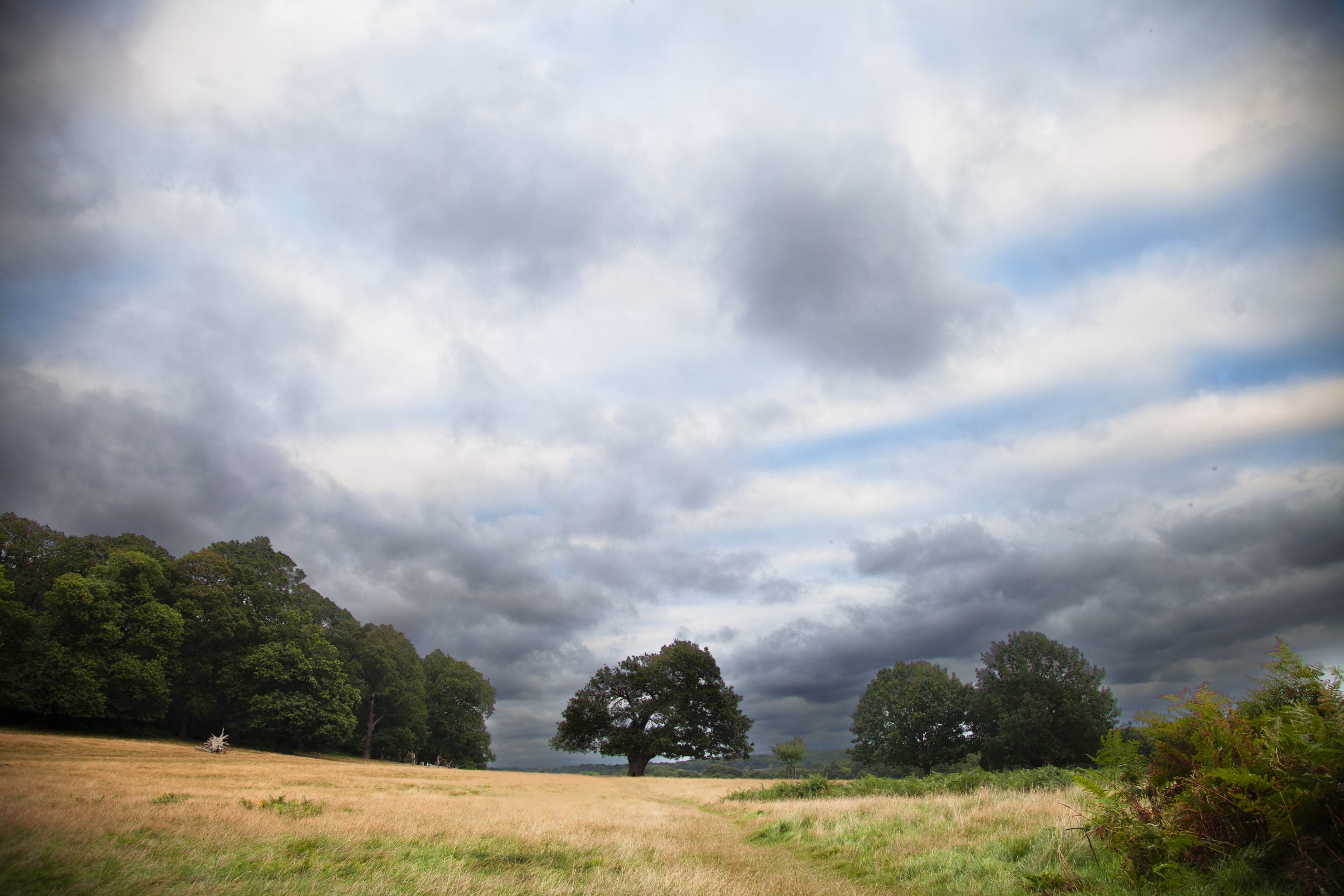A deep golden Bohemian-style Pilsner beer. Munich, Pils and Carahell malts provide a smooth and sweet base for the noble spiciness of the hops. Lagered for over six weeks for a smooth and clean finish.
Buy cans online or visit the brewery to have a pint at the tap room.
King Charles I built an 8 mile perimeter wall forming his own deer park, which helped to preserve it until the present day. Our drayman, Matt, has explored some of the events leading up to the enclosure in 1637.
1637 - Park Enclosure
The land which was to become the present Richmond Park was enclosed by Charles I in 1637. The wall that stands to this day is largely the same 17th century wall aside from a few alterations and restorations. The reason for the decision of Charles I to enclose this land is deeply entwined with the history of Richmond and the royal palace that once stood there. A very brief outline of the history of the royal park connection with Richmond helps to contextualise the reason for the enclosure of Richmond Park.
(Very) Brief History of Richmond from the royal perspective
-
-
- Originally Richmond was called Shene, or “Sceon” as it appears in the will of Theodred, Bishop of London in AD 950.
- At the time of Domesday Book in 1086, Shene was part of the manor Kingston and belonged to the king.
- King Henry I formally detached Shene from Kingston in the early 1100’s and created the separate manor of Shene which he gave to the Norman lord John Belet.
- During the reign of Edward I, a park was mentioned in the manor of Shene for the first time in a charter of 1293.
- The manor of Shene formally reverted to the crown in 1317 under Edward II, who was a frequent visitor to the palace on the river.
- A second, larger park was created by Henry VI in 1437 adjacent to the palace (although the exact location is unknown), which was referred to as “le Newe Park of Shene Co. Surrey”, to distinguish it from the 1293 park.
- Shene was officially renamed Richmond (Richemount) by Henry VII after his earldom in Richmond, north Yorkshire following his restoration of the palace there, 1497-1501.
- Henry VII also constructed a “New Park of Richmond”, however this was on the left bank of the Thames and was therefore in Middlesex.
- James I, who was an avid hunter, decided that Richmond should have a bigger and better park which he completed in 1606. He created this by adding land to the 1437 park which he acquired through purchasing from local landowners and the church. This park roughly corresponds to the current Old Deer Park and the southern, riverside portion of Kew Gardens.
-
The historical background helps to explain why Charles I chose Richmond for his new royal deer park as the association between royalty and Richmond runs deep. Charles moved his court to Richmond for a period in 1625 following an outbreak of the plague in London. Following this, Charles chose Richmond Palace for the home of the royal children, giving the palace to his wife Henrietta Maria.. As Charles enjoyed hunting very much, and spending more time in Richmond, he began looking for suitable land near the palace in order to create his own deer park.
Charles I’s “New Parke”
“The King [Charles I]…who was excessively affected to hunting and the sports of the field, had a great desire to make a great park for red as well as fallow deer between Richmond and Hampton Court” – Edward Hyde, 1st Earl of Clarendon.

Charles I in the hunting field, Sir Anthony van Dyck c.1635.
The land which Charles I chose for his deer park on Richmond Hill consisted of waste lands, Crown lands, privately owned land and common land. The area had a history of being used as a royal hunting ground; it was known as Shene Chase during the reign of Henry VIII. The main grievance with the enclosure of Richmond Park was the fact that a large part of the land which Charles I wanted was privately owned. A map of c. 1634 was created for Charles by Nicholas Lane to show the extent of the park and shows the names of the landowners with the land which Charles needed to purchase.
The purchase of the land was understandably a slow process and was not completed until 1636. Kingston parish sold their common land in 1635 but Mortlake and Petersham resisted until 1636. Besides the trouble it would have caused the parish councils, the forced sale would have caused anguish for the private owners. Two houses are known to have stood in the area of the park which were described as being ornate, well-built and possessing nice gardens. There was also much traditional medieval pasture land within the park which would have provided income for its owner. Charles caused chaos locally and this episode demonstrates the growing resentment of English communities against Charles I and the monarchy. The names of the land owners can still be seen on the Lane map of 1634 which is held at the National Archives in Kew.
Enclosure: the park wall
Edward Manning was the contractor placed in charge of overseeing the construction work for Charles’ new deer park. The initial work of transforming the area is recorded in 1630. A warrant was granted to Manning paying him to undertake landscaping work, developing a stream which emerged from a spring within the park. Manning was paid £2,500 for the construction of the brick enclosure wall, but unsurprisingly he found it difficult to source the local labour needed for the task, given the outrage the royal project had caused in the area. The bricks were made on site with locally sourced London clay, and one can imagine the smoke rising over Richmond from the kilns. It is estimated that some 5 million bricks were made and laid for the enclosure wall. The enclosure of Richmond Park included the “deer-leap”, a strip of crown owned land which ran along the outside of the brick wall. This allowed access to the outside of the wall for repairs and maintenance.
The enclosure wall took almost 3 years to complete. The authorisation of the first payment happened on 26th February 1634 and the surveyor general signed off the completion of the work on 17th December 1637. The total cost for the wall amounted to £8, 122 7s 6d. The official length of the wall is still up for debate. Originally it was estimated to have been 8 miles in length, however when completed it was a little over 11 miles. The confusion in length stems from the different ways in which it can be measured. The modern official royal parks booklet gives the length of the wall at 6.3 miles, however a group of Friends of Richmond Park who walk the wall suggest that this can’t be true. The figure of 8 miles can be derived from walking the length of the wall on the wall-top, a feat that may be impressive but should not be advised.

Ham Gate of Richmond Park
Despite enclosing a c. 2,500 acre parcel of land for his own pleasure, Charles did still allow a certain amount of access to the park. Six gates were constructed in the enclosure wall at Richmond Hill, East Sheen, Roehampton, Wimbledon (Robin Hood Gate), Coombe (Ladderstile Gate), and Ham Common. These gates allowed a degree of carriage access through the park in order to ease some of the tensions amongst the locals. Step ladders were also provided at semi-regular intervals to allow for greater pedestrian access, as the local people were still allowed to enter the park to collect firewood.
The park wall: after enclosure
A new royal deer park required a new keeper. In keeping with the royal medieval tradition of appointing a member of the nobility to “Keeper of the Park”, Charles I chose Jerome, 2nd Earl of Portland for the role in June 1637. The people who did the real work of the keeper were the “Keepers of the Lodges and Walks” who were paid £50 per annum to maintain the park on a day-to-day basis. The two keepers were Lodowick Carlile and Humfrey Rogers. One of the most exhaustive issues for the keepers was the brick enclosure wall.
The wall that Edward Manning had overseen construction of was not very sturdy as the foundations were too shallow. The wall that stands to this day bears testament to the repairs needed throughout the centuries. Two different construction techniques can be seen in the wall; the original 1630’s English technique, and a more decorative, later Flemish technique. Up to 1653, over £200 was paid out by Carlile and Rogers for repairs to the enclosure wall. In a petition of 1656, Rogers complains of a breach in the enclosure wall through which deer could escape.

Flemish style brick work

English style brick work
Charles I was only able to enjoy his new park for 5 years before the Civil War broke out in 1642. He was captured by Parliamentarian forces in January 1647 and was eventually imprisoned at Hampton Court Palace. In August of that year, rather leniently, Charles was allowed out to go hunting in Richmond Park, before escaping from Hampton Court in November 1647. Eventually Charles was captured again and executed in 1649. The park was one of a very few properties of Charles I to survive the Protectorate of Cromwell. Richmond Park passed into the possession of the City of London, with Carlile and Rogers left as keepers.
Although Charles caused suffering in the local community through the forced sale of land and the construction of the park, the brick enclosure wall ensured that the open, beautiful space of the park is there to enjoy to this day.
Further Reading
Edward Hyde, 1st Earl of Clarendon, The History of the rebellion and civil wars in England, begun in the year 1641: and conclusion thereof by the King’s blessed restoration in the year 1660 ; v. 3 1707.
Michael Davison, Park History: A Royal Irony, online.
Paul Rabbitts, (2014), Richmond Park From Medieval Pasture to Royal Park.


